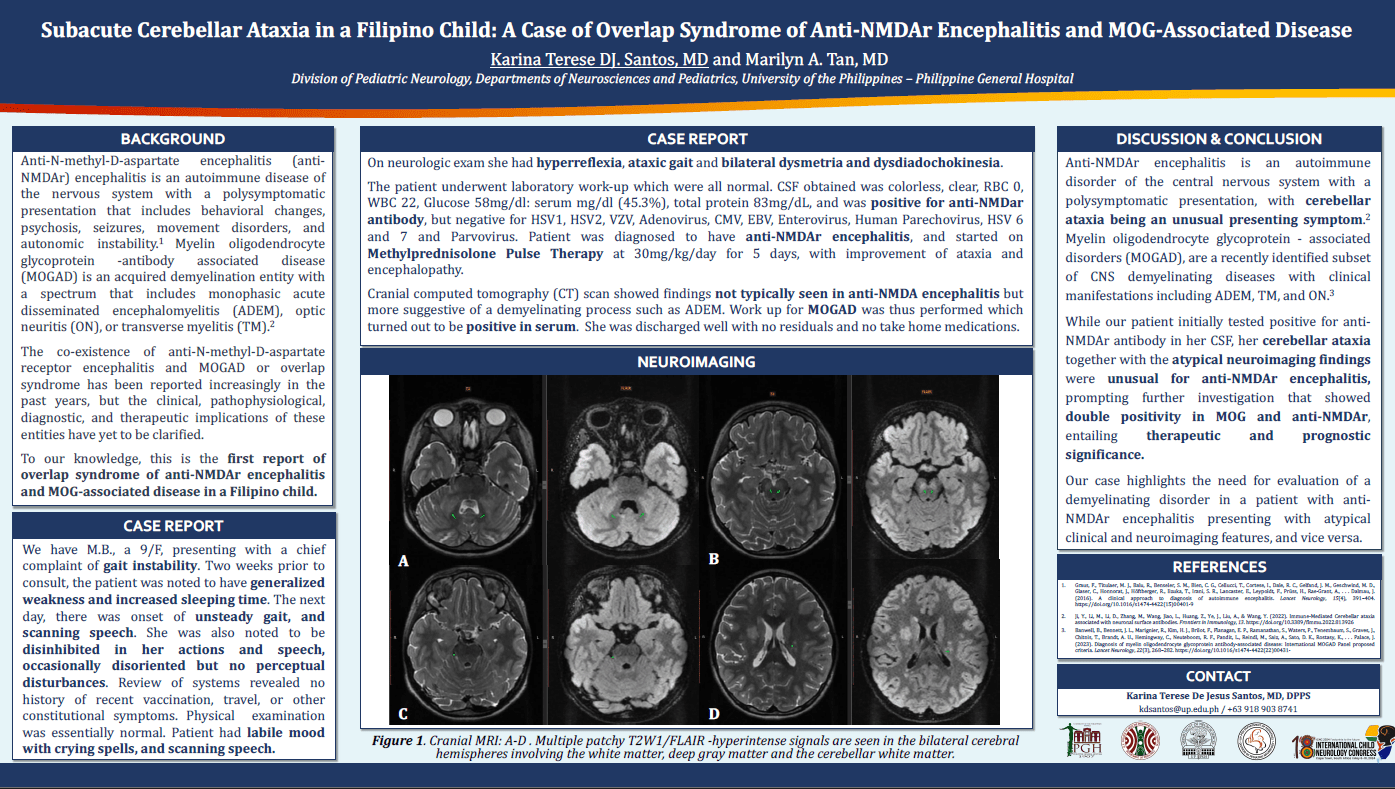Subacute Cerebellar Ataxia In A Filipino Child: A Case Of Overlap Syndrome Of Anti-NMDAr Encephalitis And MOGAD
We report here a case of a 9-year old girl presenting with labile mood, scanning speech, bilateral dysmetria, dysdiadochokinesia, truncal ataxia, and ataxic gait. Work up was positive for anti-N-methyl-D-aspartate encephalitis antibodies in the cerebrospinal fluid. She responded dramatically to one cycle of intravenous methylprednisolone infusion with complete resolution of her symptoms. Cranial magnetic resonance imaging (MRI) with gadolinium revealed the presence of confluent and symmetric T1W hypointense, T2W-FLAIR-hyperintense signals in the cerebellar white matter and patchy white-matter tract lesions with similar signal characteristics in the bilateral cerebral cortical-subcortical regions and brainstem which raised the suspicion for a demyelinating disease process such as acute demyelinating encephalomyelitis. Serologic testing revealed presence of myelin oligodendrocyte glycoprotein (MOG) antibody. On follow up one month post symptom onset, there were no recurrence or new onset symptoms. Her case emphasizes the need to recognize overlap syndromes in order to guide future management for such patients.
Karina Terese Santos
University of the Philippines - Philippine General Hospital
Philippines
Marilyn Tan
University of the Philippines - Philippine General Hospital
Philippines

Karina Terese Santos
University of the Philippines - Philippine General Hospital
Philippines